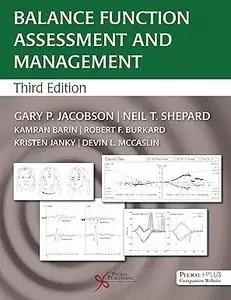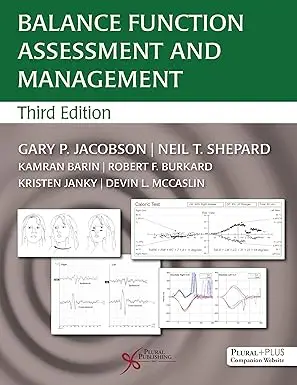Balance Function Assessment and Management, 3rd Edition
by Gary P. Jacobson, Neil T. Shepard
English | 2021 | ISBN: 1635501881 | 734 Pages | PDF | 55 MB
by Gary P. Jacobson, Neil T. Shepard
English | 2021 | ISBN: 1635501881 | 734 Pages | PDF | 55 MB
The third edition of Balance Function Assessment and Management, the leading textbook on the subject, continues to comprehensively address the assessment and treatment of balance system impairments through contributions from top experts in the areas of dizziness and vertigo. Designed for use in graduate audiology programs and by practicing audiologists, this is also a valuable text for those in the fields of physical therapy, otolaryngology, and neurology.
New to the Third Edition
Reorganized with the expertise of four additional Editors: Kamran Barin, PhD, Robert F. Burkard, PhD, Kristen Janky, PhD, and Devin L. McCaslin, PhD
Three new chapters
The History of Vestibular System Assessment (Zalewski)
Balance Therapy in the Pediatric Population (Christy-Braswell)
Challenging Cases (Shepard)
All existing chapters have been revised and updated
An effort has been made to make the text more concise
Three new helpful appendices:
Appendix I covers the pathophysiology behind dizziness. The authors provide a list of disorders that cause symptoms of dizziness and balance disorders going from common peripheral disorders to rare central disorders. For each of the disorders a vignette is provided that provides the symptoms, test findings, treatments, prognosis and site-of-lesion.
Appendix II deals with the development of codes that are used for billing our services. The discussion includes the movement in the United States for changing to Alternative Payment Models, reimbursement based on quality of care and away from fee-for-service billing.
Appendix III provides an overview of Interprofessional Education (IPE) and Interprofessional Practice (IPP) and how the hope is that IPE will lead to IPP.
As with prior editions, the text comes with access to a PluralPlus companion website that contains videos of eye movements associated with the cases described in the text and PowerPoint lecture slides for instructors.



